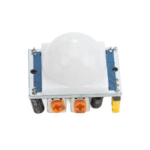1. What are remote teaching technologies?
Remote teaching technologies refer to digital tools and platforms that ensure the lesson delivery, student engagement, and classroom management without a physical presence in the class. Such technologies include video conferencing software, learning management systems, digital whiteboards, and more.
2. What are some common remote teaching tools?
Some common remote teaching tools are:
Video conferencing tools: Zoom, Microsoft Teams, Google Meet
Learning Management Systems: Moodle, Blackboard, Canvas
Collaboration tools: Google Workspace, Microsoft Office 365
Digital whiteboards: Miro, Jamboard
Assessment tools: Kahoot, Quizizz, Socrative
File sharing: Google Docs, Dropbox, OneDrive
3. What are video conferencing platforms’ roles in facilitating remote teaching?
Real time: Zoom and Google Meet help facilitate video conferencing between a teacher and her or his students. Such programs provide for actual in-person lectures as well as in-class group conversations, one-to-one tutoring opportunities, and incorporate other features to support student involvement such as sharing of screens, breakout rooms, recording, and chats.
4. How does a Learning Management System (LMS) operate?
LMS platforms provide a centralized online space where teachers can upload course materials, assignments, and resources. Students can access these materials, submit assignments, and track their progress. Popular LMS platforms also include communication tools like discussion boards and messaging for collaboration.
5. What are digital whiteboards and how are they used?
Digital whiteboards such as Miro or Jamboard allow the teacher and students to interact visually by drawing, writing, and collaborating on a shared virtual board. Teachers can use these to explain concepts, brainstorm ideas, or facilitate group activities in real time.
6. How do assessment tools help in remote teaching?
The Kahoot, Quizizz, and Socrative are some of the assessment tools which allow teachers to create quizzes, polls, and other interactive activities that measure the learning of students in real time. The Kahoot, Quizizz, and Socrative offer instant feedback to students and data-driven insights for teachers about the performance of the students.
7. What are the advantages of remote teaching technologies?
The remote teaching technologies have:
More flexibility for teachers and students
Access to vast resources and content
More collaborative and communicative
Opportunities for personalization
Increased participation through interactive resources
Reaching students regardless of location
8. In what ways do remote teaching technologies support student engagement?
Remote teaching tools promote engagement through interactive resources such as polls, quizzes, discussions, live chats, and collaborative activities. Google Meet and Zoom provide breakout rooms for group discussions, while digital whiteboards encourage active participation and visual interaction.
9. How do remote teaching tools facilitate collaborative learning?
Most tools in remote teaching offer collaboration features, such as shared documents (Google Docs, Microsoft OneNote), group chat functions, and video breakout rooms. This enables students to work together on projects, share ideas, and solve problems collectively in a virtual environment.
10. Can remote teaching technologies be used at all grade levels?
Yes, remote teaching technologies can be adapted for all grade levels. Younger students might use simpler platforms for engagement and learning, such as interactive videos or games, while older students might use more complex platforms for discussions, assessments, and project-based learning.
11. How can teachers ensure their students are engaged during remote lessons?
Teachers can ensure engagement by:
Using interactive tools like polls and quizzes
Incorporating group work and breakout sessions
Ask questions and encourage participation to chats
Post multimedia content-video, images audio
Give clear feedback and easy communication
To keep the lesson relatively short and full of variety-to keep attention glued
12 How does screen share work in distanced teaching
Screen sharing is a feature that allows teachers to share what’s on their computer screen with the students, for example, slides, documents, or websites. Most video conferencing platforms support this feature and help teachers better explain concepts with visual context.
13. What is flipped learning, and how does it work in remote teaching?
Flipped learning is an instructional strategy where students learn content at home (usually through videos or reading) and engage in more interactive, problem-solving activities in class. Remote teaching technologies like LMS and video platforms make it easier for teachers to share learning materials and engage students in active, collaborative learning.
14. How can remote teaching tools facilitate differentiated instruction?
Remote teaching technologies allow for differentiated instruction through offering different formats for presenting content-such as video, text, audio. Lessons can be tailored to include a mix of learning styles, offer a range of difficulty, and include personalized feedback based on student needs.
15. How do remote teaching technologies support assessment and grading?
Many remote teaching tools, such as Google Classroom and Moodle, provide teachers with the ability to make and grade assignments, quizzes, and tests. Many of these tools automatically grade assignments and provide instant feedback to the teacher to help streamline the assessment process and keep track of student progress.
16. How can teachers deliver personalized learning in remote environments?
Teachers can deliver personalized learning by:
Utilizing assessment data to inform instruction
Offering one-on-one tutoring sessions through video calls
Assigning customized learning resources based on student needs
Allowing students to progress through content at their own pace
Providing differentiated assignments to cater to varying skill levels
17. How do remote teaching technologies promote inclusivity?
Remote teaching technologies support inclusivity through the provision of captioning for videos, screen readers, and translation services. It also offers accommodations such as extra time to complete assignments or assessments to ensure that students with disabilities or different learning needs can participate effectively.
18. What are some of the challenges teachers face with remote teaching technologies?
Challenges include:
Technical issues (e.g., internet connectivity)
Lack of familiarity with tools and software
Engagement problems with unmotivated online students
Teaching large classes online
Equal access to technology and resources
Balancing time on the computer
with other ways of knowing
19. How do teachers handle large virtual classrooms?
A teacher manages a large virtual classroom by:
Setting clear expectations and guidelines of expected behavior
Adopting breakout rooms for small group discussions
Assigning teaching assistants or peer leaders for some aspects of teaching
Keeping sessions interactive and in focus
Regularly checking up on students via polls, quizzes, and feedback
20. How do remote teaching technologies facilitate teacher-student communication?
Remote teaching technologies allow for ongoing communication through instant messaging, emails, discussion forums, and virtual office hours. Platforms such as Slack, Google Classroom, and Microsoft Teams enable teachers to stay in contact with students and get questions and support in real-time.
21. What is asynchronous learning, and how does it fit into remote teaching?
Asynchronous learning allows students to access course materials and complete assignments at their own pace, without live interaction. This is supported by LMS platforms, pre-recorded lectures, discussion boards, and assignments that can be completed on students’ schedules.
22. Can remote teaching technologies support hands-on or practical learning?
Yes, remote teaching technologies can support practical learning by:
Providing virtual labs or simulations (e.g., for science or engineering subjects)
Using 3D modeling software as part of art or design classes
Promoting hands-on assignments where students complete activities and upload their output and progress online
Accessing video tutorials and demonstrations
23. In what way do remote teaching tools facilitate student monitoring and support?
Many remote teaching tools offer analytics and reports on student activity, attendance, and performance. Teachers can monitor engagement through platform features like participation rates in discussions, completion rates for assignments, and quiz results to identify students who may need additional support.
24. Can remote teaching technologies be used for peer feedback and collaboration?
Yes, tools such as Google Docs, Padlet, and discussion forums can be used for students to work on projects together, provide peer feedback, and share resources. This way, communication, teamwork, and critical thinking are promoted, even in virtual environments.
25. How might remote teaching technologies be used for student self-assessment?
Students can use remote teaching technologies to self-assess through quizzes or surveys, rubric review, and reflection on their work through Google Classroom or an LMS. Progress-tracking tools also enable students to monitor their development and know what needs improvement.
26. How can teachers create a positive online learning environment?
Teachers can establish clear expectations, respect, and collaboration to create a positive online learning environment. They can encourage active participation and use various media to make lessons interesting. Regular communication and feedback are essential for creating a supportive atmosphere.
27. How can remote teaching be adapted for hybrid classrooms?
Hybrid classrooms, which combine in-person and remote learning, can be supported by remote teaching technologies like video conferencing, live streaming, and digital whiteboards. Teachers can alternate between in-person and virtual activities, ensuring all students, whether remote or on-site, remain engaged.
28. How do remote teaching technologies support global education?
Remote teaching technologies break geographical barriers and allow students from different countries to learn together. Such platforms provide opportunities for cross-cultural exchange, collaborative projects, and global discussions, which can broaden the perspectives of students and expose them to international ideas.
29. What is the role of artificial intelligence (AI) in remote teaching?
AI can be utilized in remote teaching for personalization, automation of administrative tasks, such as grading, and the real-time analytics on the performance of students. Another way is AI-driven tools such as chatbots, which offer support and answer the questions of the students outside the classroom hours.
30. How can teachers stay updated on the latest remote teaching technologies?
Teachers can stay updated by attending webinars, online courses, and professional development programs focused on technology in education. They can also join teaching networks, follow educational technology blogs, and participate in online communities to share best practices and new tools.
Remote teaching technologies have become indispensable in creating an interactive and effective learning experience. Teachers can make use of different tools and platforms to enhance engagement, collaboration, and student outcomes in both remote and hybrid learning environments.











